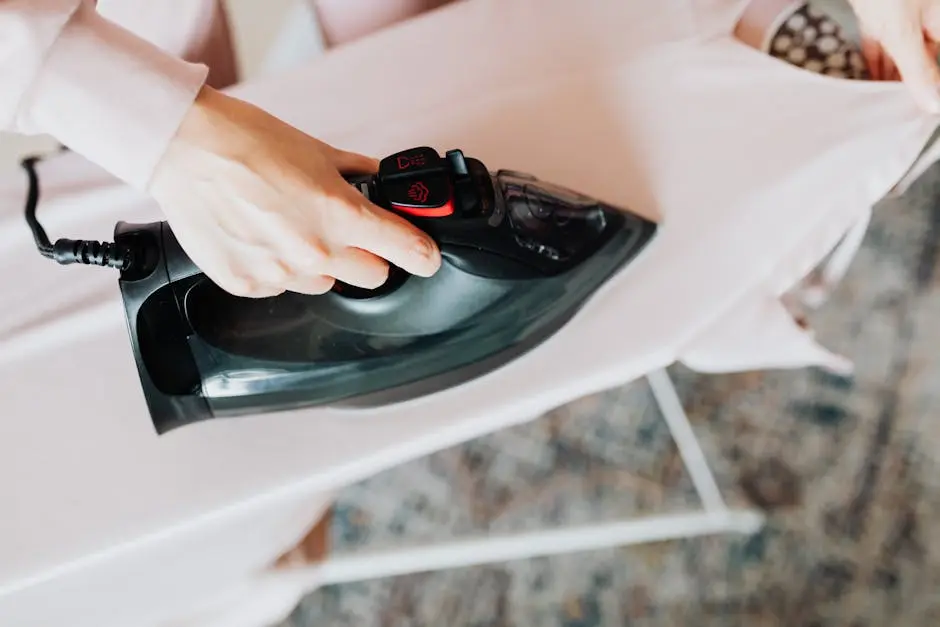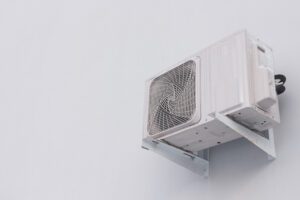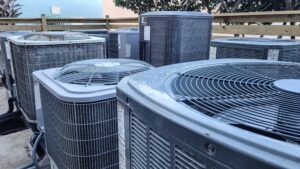Keeping your home’s heating system in top shape is crucial, especially during the cold Martinsburg winters. Regular maintenance not only ensures your system runs efficiently but also extends its lifespan. Here are some essential heating maintenance tips to keep your home warm and cozy all season long.
1. Inspect and Replace Air Filters Regularly
Air filters trap dust, dirt, and other particles, preventing them from entering your heating system. Over time, these filters can become clogged, reducing efficiency. Replace or clean your air filters every one to three months to ensure optimal airflow. This simple maintenance task can significantly improve indoor air quality and prolong your system’s life. Make checking your air filters a routine to prevent any unnecessary strain on your heating system and keep your home comfortable.
Neglecting to change your air filters can lead to a buildup of allergens and dust, which can compromise the air quality in your home. Dirty filters make your heating system work harder, using more energy and raising your utility bills. For those who suffer from allergies or asthma, clean air filters are particularly important as they help maintain a healthier living environment. Regular inspections and replacements are a cost-effective way to maintain a high-performing heating system.
2. Schedule Annual Professional Inspections
Having a professional inspect your heating system annually can identify and fix potential issues before they become major problems. A thorough inspection includes checking all components, cleaning parts, and ensuring everything is functioning correctly. Professionals have the expertise to spot issues that may not be visible to the untrained eye, making these inspections invaluable. Taking the time to schedule this routine service can prevent unexpected breakdowns when you need your heat the most.
During an annual inspection, the technician will perform essential tasks such as testing safety controls, tightening electrical connections, and examining the system for wear and tear. This comprehensive check can reveal if your system requires any repairs or adjustments, which, if addressed promptly, can save you from costly repairs down the road. Regular professional inspections are an investment in your heating system’s longevity and your home’s comfort.
3. Clean and Inspect Ductwork
Ductwork can accumulate dust and debris over time, which can reduce the efficiency of your heating system. Inspect your ducts for leaks or blockages, and consider professional cleaning if necessary to improve airflow and heating performance. Leaking ducts can lead to significant energy losses, causing your system to work harder and use more energy, which ultimately increases your heating costs. Ensuring your ductwork is clean and sealed can enhance overall system effectiveness and home comfort.
In some cases, homeowners may notice drafts or uneven heating, which can be signs of duct issues. Addressing these issues promptly can prevent further inefficiencies and help maintain an even temperature throughout your home. Regular ductwork maintenance is another simple yet effective way to keep your heating system running smoothly and efficiently.
4. Check Thermostat Settings
Ensure your thermostat is set correctly and functioning properly. Consider upgrading to a programmable or smart thermostat to improve energy efficiency and maintain consistent temperatures throughout your home. These modern thermostats can be programmed to adjust the temperature based on your daily routine, ensuring comfort while reducing energy consumption during times when heating isn’t necessary.
By optimizing your thermostat settings, you can prevent your system from overworking and reduce wear and tear on essential components. Some smart thermostats even provide energy usage reports, helping you monitor and adjust your heating patterns for maximum efficiency. An accurate and efficient thermostat is crucial for maintaining a comfortable and energy-efficient home.
5. Inspect Heat Exchanger for Cracks
The heat exchanger is a critical component of your heating system. Regularly inspect it for cracks or signs of wear, as these can lead to dangerous carbon monoxide leaks. If you suspect damage, contact a professional immediately. A cracked heat exchanger can not only compromise your system’s performance but also pose serious health risks due to the potential release of harmful gases. Regular inspections can catch these issues early, ensuring your heating system operates safely and efficiently.
Professional inspections typically include a detailed examination of the heat exchanger, preventing minor issues from escalating into major safety concerns. Addressing any damage promptly can help maintain the integrity and safety of your heating system, protecting your home and your family’s well-being.
6. Clean and Adjust Burners
Burners can accumulate soot and debris, affecting their performance. Clean and adjust the burners to ensure they are operating efficiently and safely. This task is best performed by a professional during your annual inspection. A properly maintained burner sustains not only effective heating but also operational safety, reducing the risk of malfunctions and ensuring consistent warmth throughout your home.
Proper burner maintenance includes cleaning the components and ensuring they are correctly adjusted for optimal fuel efficiency. Neglecting this aspect can lead to inefficient combustion, increased fuel consumption, and a higher likelihood of system failures. Regular cleaning and adjustments help maintain a smooth-running and efficient heating system, prolonging its longevity and performance.
7. Lubricate Moving Parts
Your heating system has several moving parts that require lubrication to operate smoothly. Regularly lubricate components such as motors and bearings to reduce friction, prevent wear and tear, and extend the life of your system. Proper lubrication ensures that these parts operate efficiently, minimizing the risk of breakdowns and enhancing the overall performance of your heating system.
Over time, friction can cause moving parts to degrade, leading to increased energy consumption and potential system failures. Regular lubrication not only improves efficiency but also helps prevent costly repairs and replacements. Ensuring that all moving parts are properly maintained is a simple yet effective way to keep your heating system functioning at its best.
8. Inspect and Test Safety Controls
Safety controls are designed to shut off your heating system in case of a malfunction. Regularly inspect and test these controls to ensure they are working correctly, providing an added layer of protection for your home and family. Testing safety controls involves checking components like the high-limit switch and flame sensor to ensure they are responsive and operational, preventing unsafe system operation.
Faulty safety controls can lead to hazardous situations, such as overheating or gas leaks, which pose significant risks to your home and health. By incorporating regular safety control inspections into your maintenance routine, you can ensure peace of mind and a safe, effectively functioning heating system throughout the winter months.
9. Ensure Proper Ventilation
Adequate ventilation is crucial for the safe operation of your heating system. Check that vents and flues are clear of obstructions and are properly connected to ensure that exhaust gases are safely expelled from your home. Blocked ventilation can lead to a buildup of harmful gases, such as carbon monoxide, which is both dangerous and unhealthy.
Proper ventilation ensures that your heating system operates efficiently and safely. This involves not only checking the indoor vents and flues but also making sure that outdoor exhaust outlets are free from debris, snow, or ice. Consistent monitoring and maintenance of ventilation pathways can prevent hazardous situations and help maintain optimal system performance.
10. Seal Gaps and Insulate
Inspect your home for gaps and drafts that can lead to heat loss. Seal any gaps around windows and doors and add insulation where needed to improve your home’s energy efficiency and reduce the strain on your heating system. Sealing gaps can prevent cold air from infiltrating your home and reduce the workload on your heating system, leading to lower energy bills and enhanced comfort.
Proper insulation is another effective way to maintain a warm home and optimize heating efficiency. Consider insulating areas such as the attic, walls, and floors to minimize heat loss. Investing in insulation and sealing can create a more energy-efficient home, ensuring that your heating system operates efficiently and effectively throughout the winter.




